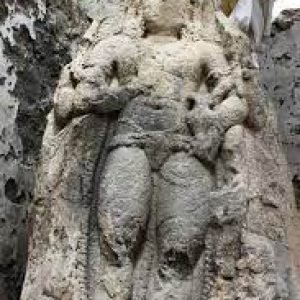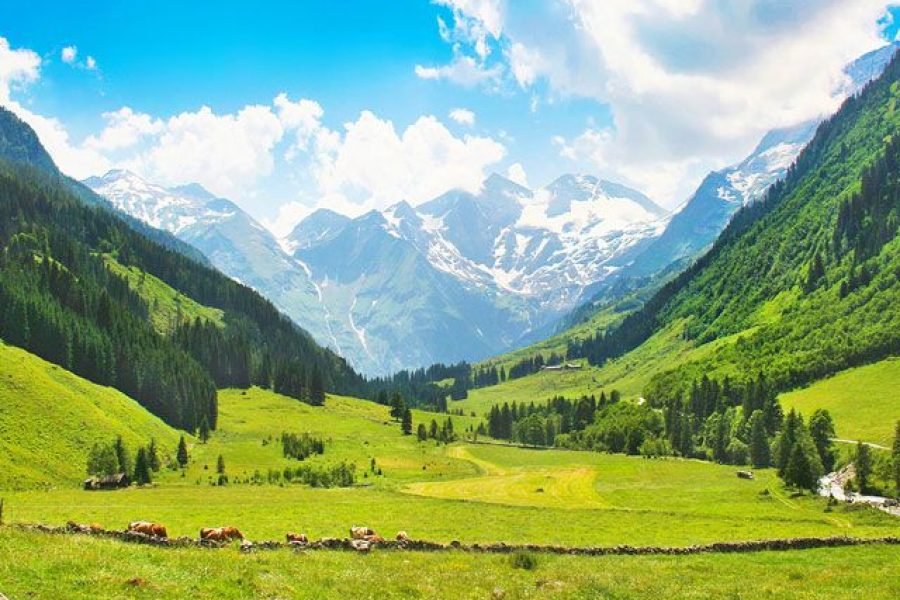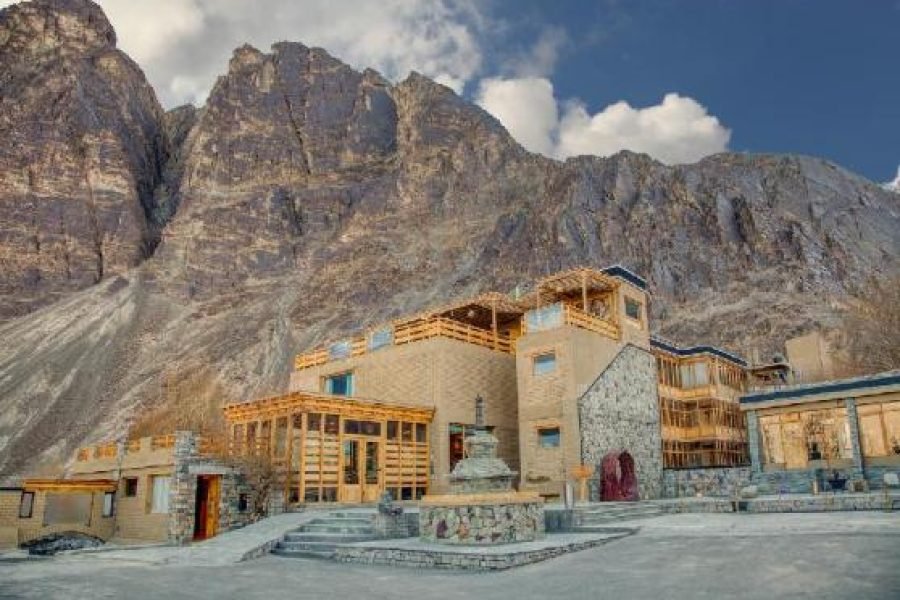Sculpture at Drass



Table of Contents
ToggleDrass town, nestled in the serenely beautiful landscapes of Kashmir, is one of the most picturesque and historically relevant sites in India. It’s said for a cold climate and its naturally scintillating beauty and yet it has an interesting way of displaying art, that is sculpture. The sculpture at Drass is not a mere aesthetic reflection of the region’s culture but a symbol for its rich historical legacy. This blog will deal with the sculptures of Drass, going through their cultural significance, historical context, artistic styles, and ways in which they connect people from Drass to their heritage. In the process, we’ll also explore keywords such as Kashmiri art, heritage, sculpture, Buddhist influence, and the legacy of Drass. Join us in discovering the beautiful marriage of art, history, and culture that exists in this small yet profoundly important region.
The Historical and Cultural Significance of Drass
The Drass town is in the Kargil district of Jammu and Kashmir. Often called the second coldest place inhabited on Earth, it drops to extreme lows in the winter. Although the climate is extremely cold, because of its strategic location and place in the historical landscape of the Kashmir Valley, it holds a special place in Indian history. Centuries of cultural influence settled upon this region from the Buddhist monks who came here during the reign of the Kushan Empire to the rise of Islamic influence that followed.
In the tapestry of history, Drass has significant geopolitical value. The town has a rich cultural heritage, which finds evidence in the archaeological and sculptural treasures decorating the landscape. These sculptures give a glimpse into the cultural and religious practices that were prevalent in the region hundreds of years ago. The most dominant characteristic of these sculptures at Drass is Buddhist influence, for this town is highly related to the era of Buddhism that started as early as the first few centuries of the Common Era.
Buddhist Influence and Sculpture at Drass
These were the earliest and most celebrated sculptors in Drass that strongly correlate to Buddhism. It was part of the Buddhist culture belt that extended from Gandhara, which is part of modern-day Pakistan and Afghanistan, to Kashmir. It has been shown that the Kushan Empire brought Buddhism to the area as early as the 1st century CE and produced many monasteries and stupas.
Many of these sculptures are still to be seen around Drass and within its vicinity. Many of the carvings were in stone, done to adorn the walls of stupas or for symbolizing the deities or symbolic significance of Buddhism. Such sculptures have significance not only due to the artistic culture of their times but also because of revealing how Buddhism was practiced at that time by the people of Drass.
The most iconic forms of sculptures in this region are the depictions of the Buddha. The sculptures usually depict the Buddha in different poses, each symbolizing different aspects of his teachings. For example, the seated Buddha represents meditation and enlightenment, while the standing Buddha signifies the Buddha’s active role in teaching the Dharma to his followers. The intricate designs of these sculptures reflect the advanced craftsmanship of the time.
There is another crucial aspect of artistic representation, especially by Drass artists, through stone carvings depicting stupas, a representation of the cosmos according to Buddhism. Typically, stupas are studded with motifs like lotus and the wheel of Dharma to depict purity as well as the teaching principles of Buddha.
Transition into Influence of Islam
It was by the 14th century that Islamic influence started to gain ground in Kashmir. Religious scene in Kashmir underwent a sea change. It cannot be excluded from this as well because Drass is part of the greater Kashmir Valley. With time, Hinduism and Buddhism gradually gave way to Islam but the impacts of earlier religions continued to define the region.
At Islamic periods, Drass boasts its mosque monuments whereas has seen introducing architectural styles in lieu with the Islamic architecture. Nevertheless in that respect, fragments of the Buddhist sculptures stand there that serve as proofs of that heterogeneous religions. In this respect, one could find that even if such old traditions continued within certain respects, despite any of political or religious dynamics going changed
As with much of Kashmir, the artistic medium at Drass was dictated by the natural surroundings and the available materials. Stone was the primary medium for sculptures because of its abundance in the region. The stones were often fine-grained and hard, which was ideal for the work to be done.
The sculptors of Drass were highly skilled artisans. The sculptures that they produced are very detailed and intricate. Such features of sculptures include precision. Many Buddhist sculptures feature delicate facial features, intricate robes, and elaborate headdresses. Such detail shows that the artisans practicing at this time in Drass had mastered advanced techniques.
Besides, many sculptures were painted to make them more colorful in appearance. Such colors obtained from natural minerals may have been applied to the surface of the sculptures to emphasize details and enhance the depth of figures.
A mix of stone and paint did wonders to create sculptures that are both artistically fine and sturdy, capable of holding out against the climatic extremities of Drass. Therefore, most of these pieces are well preserved; it is a very infrequent scope to examine Kashmiri art and craftworks dating back to ancient times.
Sculptors in Modern Times and Revival of Traditions
In modern Drass, even the tradition of sculpture lingers on through local artisans as well as modern sculptors. Though the artistic output of the region with time has evolved, it still remains strong to its past, especially regarding techniques and materials used by earlier sculptors. Modern artists from Drass have drawn inspiration from ancient Buddhist sculptures and blended the same with modern aesthetics to result in new works of art that reflect the unique blend of culture of the region.
For aesthetic purposes, the revival of sculpture in Drass would prove critical in keeping in check the cultural identity of that region. Most of today’s young artists return to their ancestors’ traditions that have been left back for them, a method of expression and to guarantee that the legacy of Drass continues on in the times ahead. Besides, the themes of the present day are problems and issues in the community of today but in the techniques and symbols used, it is the same ones used in the earlier works.
Drass Sculpture and Cultural Tourism
Drass’s sculptures have started drawing tourist attention, and there is an eagerness on part of the cultural enthusiast to see the rich heritage that Drass has to give to its people. Though a town as cold as Drass will deter the large number of tourists, the artistic heritage of the town is alluring and bringing more and more people each year.
The Drass region has huge tourism potential, especially in terms of cultural tourism with sculptures and historical sites in abundance. Local tour guides, along with cultural experts, have been working to preserve these ancient sculptures and make them available for tourists. The work of local contemporary artists and artisans has also been promoted as they are provided with a means of sharing their creative expressions to the world.
Drass also sits along the control line with Pakistan, a sensitive region by that but, at the same time, opens an opportunity in promoting peace and cultural intercourse. The town’s sculpture and heritage bridge the communities and religions showing shared history and cultural values binding the region together.
Conclusion: Protecting the Heritage of Sculpture in Drass
The sculptures at Drass are greater than mere art; they breathe history into the region’s rich and diverse past. Beginning with their Buddhist origins and passing on through various reinterpretations down to the present, sculptures from Drass tell the tale of a place that has witnessed the ascendancy and decline of empires, the spread of religion, and the sustaining vigor of artistic expression. These sculptures reflect not only the artistic traditions of Drass but also a people who have shown such resilience in their culture. The craftsmanship, symbolism, and historical value of these pieces are what make them so very special and deserving of preservation for future generations to appreciate.
With further study and appreciation of the sculptures of Drass, it is of utmost importance that such pieces of history be preserved for the future. Whether through tourism, academic study, or continued work by the local artists, the Drass sculptors remain the essence of the town’s identity. The art of sculpture in Drass does not only depict the historical past but is also a live, evolving culture that continues to shape the landscape of this fascinating region.
In the end, the sculptures of Drass stand as timeless works of art, one between past and present. They remind us that there is deep cultural heritage in every nook and corner of the world.
FAQ's
1. What are the famous sculptures in Ladakh?
The most famous sculptures in Ladakh include the giant Maitreya Buddha in Diskit Monastery, the Buddha statue in Thiksey Monastery, and the stone carvings in Alchi Monastery.
2. Where can I see Buddha sculptures in Ladakh?
Buddha sculptures can be seen in various monasteries like Thiksey, Hemis, Diskit, and Alchi Monastery, each housing unique and historic Buddhist art.
3. What is the significance of the Maitreya Buddha sculpture in Ladakh?
The Maitreya Buddha in Diskit Monastery is an iconic symbol of hope and is a representation of the future Buddha. It stands at 32 meters, making it one of the tallest Buddha statues in Ladakh.
4. Which monastery in Ladakh has the largest Buddha sculpture?
The Diskit Monastery houses the largest Buddha sculpture in Ladakh, the Maitreya Buddha, which stands 32 meters tall.
5. What is the history behind the Buddha sculptures in Ladakh?
The Buddha sculptures in Ladakh have deep cultural and religious significance, symbolizing the teachings of Buddha and the region’s strong Buddhist heritage. Many of these sculptures were created by skilled craftsmen over centuries.
6. Are there any ancient sculptures in Ladakh?
Yes, ancient stone carvings and sculptures can be found at places like Alchi Monastery, which features murals and sculptures dating back to the 11th century.
7. What is Alchi Monastery famous for?
Alchi Monastery is famous for its ancient murals and sculptures, which are among the best-preserved examples of Buddhist art in Ladakh. The monastery showcases the distinct Indo-Himalayan style.
8. Where is the Thiksey Buddha statue located?
The Thiksey Buddha statue is located in the Thiksey Monastery, near Leh. This 15-meter statue is one of the most visited and revered sculptures in Ladakh.
9. How are the sculptures in Ladakh maintained?
Many sculptures in Ladakh, especially in monasteries, are meticulously maintained by local monks and conservationists. These sacred works are preserved with great care, often using traditional methods.
10. What materials are used in Ladakhi sculptures?
Ladakhi sculptures are often made from stone, wood, clay, and metal. Some statues, especially of Buddha, are cast in bronze, while murals and carvings are done on stone and wood.
11. What is the size of the Maitreya Buddha sculpture in Diskit?
The Maitreya Buddha in Diskit Monastery stands at a height of 32 meters, making it one of the tallest statues in Ladakh.
12. Are there any sculptures depicting Buddhist deities in Ladakh?
Yes, many monasteries in Ladakh, such as Hemis, Thiksey, and Alchi, feature sculptures of various Buddhist deities like Avalokiteshvara, Tara, and Vajrapani.
13. Is photography allowed near sculptures in Ladakh monasteries?
Photography policies may vary by monastery. While some allow photography in certain areas, it is important to seek permission before photographing sacred sculptures, especially in prayer halls.
14. Can I visit the sculptures of Ladakh throughout the year?
Yes, most sculptures in Ladakh’s monasteries are accessible throughout the year, though the best time to visit is during the summer months (May to September) when the weather is more favorable.
15. What is the cultural importance of the sculptures in Ladakh?
The sculptures in Ladakh hold immense cultural and religious significance. They represent the Buddhist faith, teachings, and traditions, and are often used in rituals and ceremonies.
16. What is the style of sculpture in Ladakh?
The sculpture style in Ladakh blends Tibetan, Indian, and Central Asian influences. The art typically features detailed depictions of Buddhist deities, saints, and historical figures.
17. Can I find any sculptures in Ladakh depicting local culture?
Yes, while most sculptures are Buddhist in nature, some local temples and monasteries feature sculptures that reflect Ladakh’s unique cultural blend, including depictions of traditional life and local legends.
18. Where can I find a large Buddha sculpture near Leh?
The largest Buddha sculpture near Leh can be found at the Thiksey Monastery. It stands at a height of 15 meters and is an impressive sight.
19. What are the best monasteries to visit for sculptures in Ladakh?
The best monasteries to visit for sculptures in Ladakh include Diskit Monastery, Thiksey Monastery, Hemis Monastery, and Alchi Monastery.
20. How old are the sculptures in Alchi Monastery?
The sculptures in Alchi Monastery date back to the 11th century and are known for their intricate detail and preservation of ancient Buddhist art.
21. Are there any modern sculptures in Ladakh?
While most sculptures in Ladakh are traditional and ancient, some modern installations have been introduced in recent years, reflecting both religious themes and contemporary art forms.
22. What is the role of sculptures in Buddhist teachings in Ladakh?
Sculptures in Ladakh serve as visual aids in teaching Buddhist philosophy and stories. They help monks and visitors reflect on the teachings of the Buddha, engage in meditation, and deepen their spiritual understanding.
23. How can I reach the sculptural sites in Ladakh?
Sculptural sites in Ladakh, such as monasteries, are accessible by road from Leh. You can hire a taxi, rent a bike, or join guided tours to visit these places.
24. What is the significance of the statue of Avalokiteshvara in Ladakh?
The statue of Avalokiteshvara in Ladakh is highly revered as the Bodhisattva of Compassion. It is a symbol of compassion, and pilgrims often visit these statues to seek blessings for wisdom and peace.
25. How does Ladakhi sculpture reflect the region’s Buddhist identity?
Ladakhi sculpture, particularly Buddhist art, reflects the region’s deep-rooted Buddhist identity through symbolic representations of deities, teachings, and sacred figures. The intricate carvings and sculptures are a reflection of the region’s spiritual and artistic heritage.
How to book Tours for Ladakh with Charzan Holidays?
For a seamless and exceptional booking experience, contact Charzan Holidays at reservations@charzan.in or call us at +919622224473









0 Comment